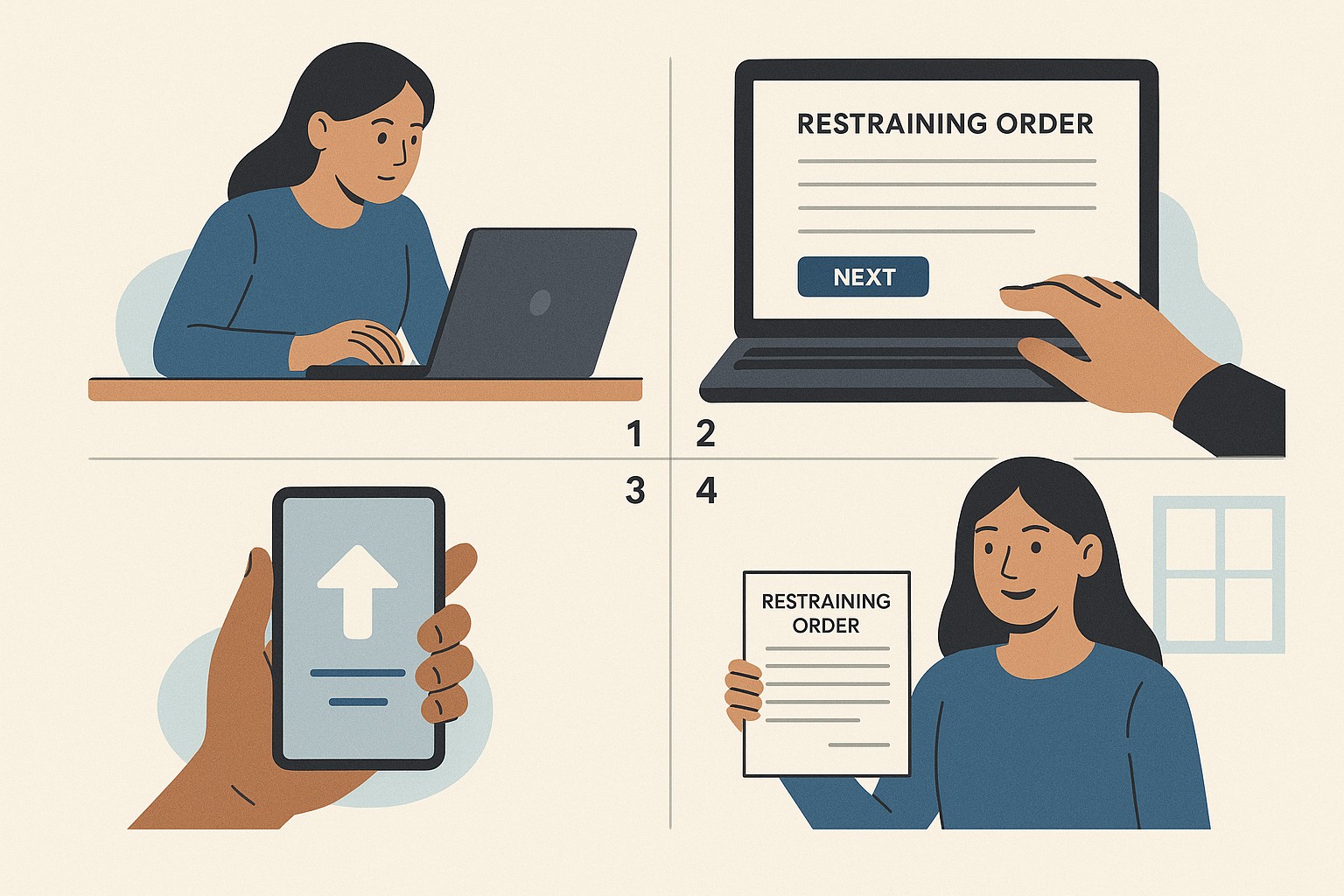How to File a Free Domestic-Violence Restraining Order Online in San Jose—2025 Step-by-Step Tutorial
This guide provides a step-by-step tutorial for domestic violence survivors in San Jose on how to file a Domestic Violence Restraining Order (DVRO) online for free in 2025, a new and expedited process.

For domestic violence survivors in San Jose, the path to legal protection has become more accessible than ever. The Santa Clara County Superior Court has launched a new, streamlined process for filing a Domestic Violence Restraining Order (DVRO) online, and as of 2025, it is now entirely free. This step-by-step tutorial is designed to empower you with the knowledge and tools to file for a DVRO from a safe location, putting you on the path to security and peace.
What You Need to Know Before You Begin
Before you start, here are a few key facts about the new online filing system:
-
Zero Filing Fees: There are no longer any court fees associated with filing for a DVRO.
-
Convenience and Safety: You can file from a safe location using a computer or a secure mobile device.
-
Faster Processing: The online portal is designed to get your petition to a judge more quickly, expediting the issuance of a Temporary Restraining Order (TRO).
Step-by-Step Online Filing Tutorial for San Jose
This guide will walk you through the process of using the Santa Clara County online portal.
Step 1: Gather Your Information and Evidence
Before you go online, have the following information ready:
-
The abuser's full name, address, and an estimate of their age.
-
Dates, times, and locations of all incidents of abuse.
-
A factual, written account of the abuse.
-
Any supporting evidence, such as text message screenshots, photos of injuries, or police report numbers.
Step 2: Access the Santa Clara County Superior Court Online Portal
Navigate to the official Santa Clara County Superior Court website and find the dedicated section for "Domestic Violence Restraining Orders." Look for the link to the online e-filing system.
Step 3: Fill Out the Forms Online
The portal will guide you through the required forms, primarily the DV-100 form.
-
Be Factual and Specific: When describing the abuse, be as specific as possible. Instead of saying "he was mean," state "he yelled at me and broke a dish on [Date] at [Location]."
-
Use Extra Forms if Needed: If you need more space for your account of the abuse, be sure to use the DV-100 Attachment form as instructed.
Step 4: Upload Your Evidence
The online system will have a section for you to upload your supporting evidence.
-
Organize Your Files: Name your files clearly (e.g., "Photo of Bruise_Date," "Texts from Abuser_Date").
-
Check File Types: The portal will specify which file types are accepted (e.g., .pdf, .jpg).
Step 5: Review and Submit
Carefully review all the information you have entered. Once you are confident everything is accurate, click the final "Submit" button. The court will provide you with a case number, and you will receive email notifications about the status of your petition.
What Happens After You File?
After submission, a judge will review your petition. If it is approved, a Temporary Restraining Order (TRO) will be issued. The TRO is an immediate order that protects you until your court hearing. The online process helps to get this crucial protection in place much faster than a traditional in-person filing.
Where to Get Help in San Jose:
While this guide provides a clear pathway, navigating the legal system can still be challenging. The Santa Clara County Superior Court has partnerships with local legal aid organizations and domestic violence support centers that can provide free, expert legal counsel and assistance with the online filing process.
Frequently Asked Questions (FAQs)
1. Do I have to go to court at all if I file online?
Yes, you will still need to attend a court hearing. The online filing process simply handles the initial petition and helps you get a Temporary Restraining Order (TRO) without a preliminary trip to the courthouse.
2. How long does the online process take from start to finish?
Filing the petition online can take anywhere from 30 minutes to a few hours, depending on how much information and evidence you have to upload. The court's review and issuance of a Temporary Restraining Order can be very quick, often within 1-2 business days.
3. What if I don't have a computer or safe internet access?
Many legal aid organizations and public libraries in San Jose offer computers with secure internet access. They can also provide a safe space and assistance with the online filing process.
4. Is my information safe when I file online?
Yes, the Santa Clara County Superior Court uses a secure, encrypted online portal for all legal filings. Your personal information and the details of your case are confidential and protected.
5. What is a "Temporary Restraining Order"?
A Temporary Restraining Order (TRO) is a court order that a judge issues to provide you with immediate, temporary protection while you await your full court hearing.
6. Can an abuser track my online filing?
The online portal is designed to be confidential. However, you should use a secure, private device (not one shared with the abuser) and clear your browser history to ensure your safety and privacy.
